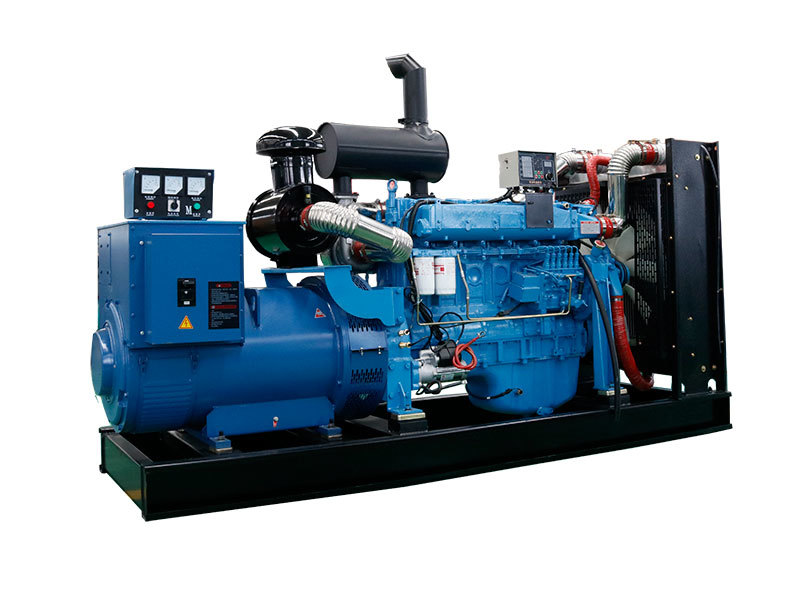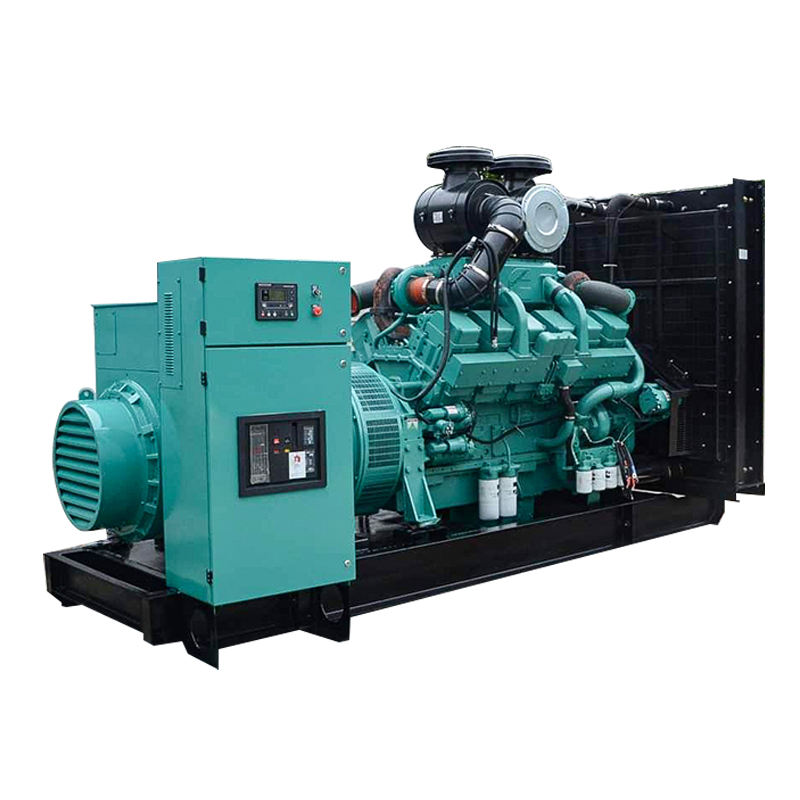Unlocking Uptime: Comprehensive Industrial Production Downtime Solutions for a Resilient Future
In the fast-paced world of modern manufacturing, few things strike more fear into the hearts of plant managers and executives than the dreaded word: downtime. It’s a silent, insidious drain on resources, productivity, and ultimately, profitability. To be honest, it's not just about a machine stopping; it's a ripple effect that touches every corner of an operation, from missed deadlines and unhappy customers to spiraling repair costs and damaged reputations. Have you ever wondered about the true, hidden costs of an unexpected halt in production?
Frankly speaking, the quest for robust industrial production downtime solutions isn't merely about fixing things when they break. It's about building a resilient, proactive operational framework that anticipates issues, reacts swiftly when challenges arise, and continuously optimizes for maximum uptime. It’s a strategic imperative, not just a maintenance chore. In my experience, companies that prioritize minimizing manufacturing downtime are the ones that thrive, adapting to market demands and outperforming competitors.
The True Cost of Downtime: Beyond the Obvious
When a production line grinds to a halt, the immediate financial losses are often the first thing people consider. However, the true cost of downtime extends far beyond just lost production hours. It’s a complex web of direct and indirect expenses that can severely impact a company's bottom line and long-term viability.
Financial Impact
Direct costs are straightforward: lost revenue from unproduced goods, idle labor costs, and expedited shipping fees to catch up. But then there are the indirect financial hits. Think about the cost of emergency repairs, often at premium rates, or the expense of rush-ordering specialized parts. Many experts agree that the cumulative effect of these costs can be staggering, often dwarfing the initial perceived loss. Interestingly enough, a single hour of downtime in some industries can cost millions of dollars.
Operational & Reputational Damage
Beyond the financial ledger, operational efficiency takes a significant hit. Production schedules are disrupted, leading to a cascade of delays throughout the supply chain. This can strain relationships with suppliers and, more critically, with customers. A reputation for unreliability can be incredibly difficult to shake off, leading to lost contracts and a decline in market share. It's worth noting that once trust is eroded, rebuilding it requires substantial effort and time. This is precisely why effective industrial production downtime solutions are so vital – they protect not just profits, but also brand integrity.
Proactive Strategies: Preventing Downtime Before It Happens
The best way to deal with downtime is to prevent it from happening in the first place. This isn't a revolutionary idea, but the methods and technologies available today have transformed preventative maintenance into a sophisticated, data-driven science. Proactive strategies are at the heart of modern industrial production downtime solutions.
Predictive Maintenance (PdM)
Gone are the days of purely reactive or time-based maintenance. Predictive maintenance (PdM) uses advanced analytics and real-time data to forecast equipment failures before they occur. By monitoring vibrations, temperature, oil analysis, and electrical currents, systems can detect subtle anomalies that indicate impending issues. This allows maintenance teams to schedule interventions precisely when needed, minimizing disruption and optimizing asset lifespan. I've found that implementing a robust PdM program can drastically reduce unexpected breakdowns, shifting from a "fix-it-when-it-breaks" mentality to a "fix-it-before-it-breaks" paradigm.
Condition Monitoring & IoT Integration
The Internet of Things (IoT) has revolutionized condition monitoring. Sensors embedded in machinery collect vast amounts of data, transmitting it to centralized platforms for analysis. This continuous stream of information provides an unparalleled view into the health and performance of assets. From monitoring motor bearing temperatures to tracking conveyor belt wear, IoT enables real-time insights that were previously impossible. This integration is a cornerstone of modern preventative maintenance strategies for industry, allowing for constant vigilance and early warning systems.
Data Analytics & AI
Raw data is just noise without intelligent analysis. Artificial Intelligence (AI) and Machine Learning (ML) algorithms are crucial for sifting through massive datasets generated by IoT sensors. These technologies can identify complex patterns, predict failure modes with high accuracy, and even recommend specific maintenance actions. AI-driven insights transform reactive maintenance into predictive power, making maintenance more efficient and effective. Frankly speaking, leveraging these technologies is no longer optional; it's a competitive necessity for any serious pursuit of industrial production downtime solutions.

Rapid Response & Recovery: When Downtime Strikes
Despite the best proactive measures, some downtime is inevitable. Equipment can fail, human error can occur, or external factors can intervene. When the unexpected happens, the ability to respond swiftly and recover efficiently becomes paramount. Effective industrial production downtime solutions also encompass robust reactive strategies.
Root Cause Analysis (RCA)
When an incident occurs, the immediate goal is to get production back online. However, the long-term goal must be to prevent recurrence. This is where Root Cause Analysis (RCA) comes in. RCA is a systematic process for identifying the underlying reasons for a problem, rather than just addressing the symptoms. By asking "why" repeatedly, teams can uncover systemic issues, faulty procedures, or design flaws that contributed to the breakdown. It's worth noting that a thorough RCA process, while seemingly time-consuming, is invaluable for continuous improvement and preventing future similar incidents.
Strategic Spare Parts Management
Having the right spare parts available, in the right quantity, at the right time, is critical for rapid recovery. This isn't just about stocking every possible part; it's about strategic inventory management based on criticality, lead times, and failure rates. Modern systems use data analytics to optimize spare parts inventory, ensuring that essential components are readily accessible without tying up excessive capital in unused stock. In my experience, a well-managed spare parts inventory can shave hours, if not days, off recovery times.
Skilled Workforce & Training
Technology is powerful, but it's only as effective as the people operating and maintaining it. A highly skilled and well-trained workforce is an indispensable asset for both preventing and recovering from downtime. This includes not just maintenance technicians, but also operators who can identify early warning signs, and engineers who can diagnose complex issues. Continuous training, cross-training, and knowledge transfer programs ensure that expertise is retained and shared across the organization. Many experts agree that investing in your people is one of the most impactful industrial production downtime solutions you can implement.
The Role of Technology: Enhancing Uptime and Efficiency
Technology isn't just an enabler for proactive maintenance; it's a transformative force that reshapes how we approach production and uptime. From advanced simulations to intelligent automation, the digital revolution offers powerful tools for optimizing production uptime and building resilience.
Digital Twins & Simulation
Imagine having a virtual replica of your entire factory floor, or even a single machine, that behaves exactly like its physical counterpart. This is a digital twin. By creating these virtual models, manufacturers can simulate various scenarios, test new processes, predict performance, and identify potential bottlenecks or failure points without impacting actual production. This allows for proactive problem-solving and optimization in a risk-free environment, significantly contributing to robust industrial production downtime solutions.
Automation & Robotics
Automation and robotics reduce the reliance on manual labor for repetitive, dangerous, or precise tasks, thereby minimizing human error and improving consistency. Automated systems can operate continuously, often with greater precision and speed than human operators, leading to higher throughput and reduced risk of production halts due to fatigue or mistakes. Furthermore, robots can handle tasks in environments unsuitable for humans, ensuring continuity in challenging conditions.
Cloud-Based Solutions & Remote Monitoring
The shift to cloud-based platforms offers unprecedented flexibility and accessibility for monitoring and managing industrial operations. Data from sensors and machines can be accessed remotely from anywhere in the world, allowing experts to diagnose issues, provide support, and even initiate corrective actions without being physically present on the factory floor. This capability is particularly valuable for global operations or in situations where on-site access is limited, ensuring that potential downtime can be addressed swiftly, regardless of location.

Cultivating a Culture of Continuous Improvement
While technology and processes are crucial, the most effective industrial production downtime solutions are underpinned by a strong organizational culture that embraces continuous improvement. It’s about fostering an environment where learning from failures is encouraged, and every team member feels empowered to contribute to operational excellence.
Cross-Functional Collaboration
Downtime is rarely just a maintenance problem; it often involves operations, engineering, supply chain, and even sales. Breaking down silos and fostering cross-functional collaboration is essential. When teams work together, sharing insights and responsibilities, they can identify issues more quickly, develop more comprehensive solutions, and implement changes more effectively. Regular meetings, shared KPIs, and joint problem-solving sessions can significantly enhance this collaboration.
Performance Metrics & KPIs
What gets measured gets managed. Establishing clear Key Performance Indicators (KPIs) related to uptime, mean time to repair (MTTR), mean time between failures (MTBF), and overall equipment effectiveness (OEE) provides a clear picture of performance. Tracking these metrics over time allows organizations to identify trends, measure the effectiveness of new initiatives, and pinpoint areas that require further attention. It's worth noting that transparency in these metrics can also motivate teams to strive for better results.
Regular Audits & Reviews
Continuous improvement isn't a one-time project; it's an ongoing journey. Regular audits of maintenance procedures, operational workflows, and technology utilization help identify weaknesses and opportunities for optimization. Post-mortem reviews of downtime incidents are crucial learning opportunities, ensuring that lessons learned are documented and integrated into future practices. Frankly speaking, this iterative process of planning, doing, checking, and acting is what truly builds long-term operational resilience.

Ultimately, tackling industrial production downtime is a multi-faceted challenge that demands a holistic approach. It's about leveraging cutting-edge technology like AI and IoT, implementing robust predictive and reactive strategies, and most importantly, cultivating a culture of continuous improvement and collaboration. The journey to unlocking maximum uptime is ongoing, but the rewards – increased profitability, enhanced reputation, and a more resilient operation – are undeniably worth the effort. What steps will you take today to fortify your production against the threat of downtime?
For more detailed information, please visit our official website:industrial production downtime solutions
About the author: Dr. Alistair Finch is a leading expert in industrial operations and manufacturing efficiency, with over 20 years of experience optimizing complex production systems. Holding a Ph.D. in Industrial Engineering, his work focuses on leveraging advanced analytics, IoT, and AI to drive operational excellence and minimize downtime. He is a passionate advocate for proactive maintenance strategies and cultural transformation in the industrial sector.





